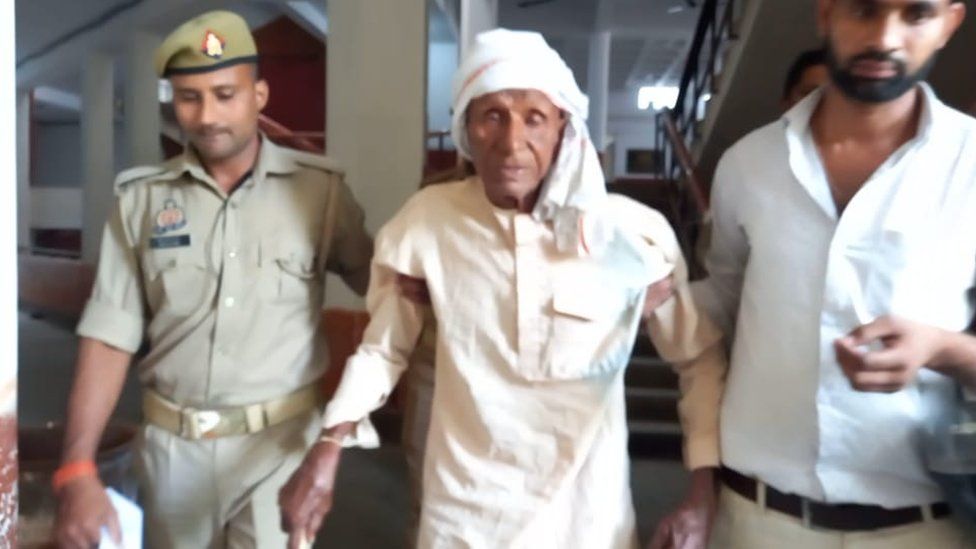Exam cheating in India.
On a chilly December morning, police in the western state of Rajasthan saw a bus heading towards Udaipur city and followed it.
The night before, they had received a tip-off - the question paper for an examination to recruit teachers in the state's government schools was going to be leaked in the morning, just hours before millions of students were to take the test. Some 1,193 exam centres were set up for the eagerly-awaited recruitment drive on 24 December.
In India, where government jobs are highly coveted, cases of aspiring candidates resorting to unfair means are not uncommon. One way many job-seekers try to secure a place is by cheating in exams, which includes buying question papers or paying someone else to write the test on their behalf.
The bus in Udaipur was on its way to an examination centre and police suspected that those leaking the paper were on it. At first, they waited at a distance as the bus circled around a building for a few minutes. Then they stopped it.
"Inside, we found four government school teachers who were solving question papers for at least 20 candidates," an official, who wished to stay anonymous, told the BBC.
The aspirants had allegedly paid the teachers, who were on invigilation duty at the centre, money - the police did not specify how much - to solve the papers for them. Around 20 "dummy" candidates, who were paid by aspirants to take the test on their behalf, were also caught from the bus. Police alleged the accused were carrying fake IDs.
A total of 48 people were arrested in connection with the scam that morning, prompting authorities to cancel the examination process.
The incident was the latest in a series of scams where question papers for crucial government exams have been leaked or solved in exchange for money. Since 2018, at least 12 recruitment drives have been cancelled in the state after the test was leaked - just days, sometimes hours, before the exam.
In Gujarat, the home state of Prime Minister Narendra Modi, at least nine attempts to recruit schoolteachers and junior clerks have been cancelled since 2014 due to paper leaks. In the eastern state of West Bengal, authorities had to launch an investigation last year after question papers to hire teachers were widely shared on social media, hours before the exam.
The story is no different in the central state of
Madhya Pradesh which was rocked by a massive recruitment scam in 2009 when aspirants taking a medical exam hired students from neighbouring states to write their papers. Question papers were also leaked and sold to candidates at astronomical prices, before authorities clamped down and arrested thousands.
The heartland states of Bihar and Uttar Pradesh are equally infamous.
In Bihar, students are sometimes not allowed to wear shoes and socks to exam centres to stop them from cheating. In the past, authorities have imposed fines, jail terms and even detained parents for allegedly helping their children cheat.
In neighbouring Uttar Pradesh, exams are often conducted under CCTV surveillance. ...
https://www.bbc.com/news/world-asia-india-64495673

